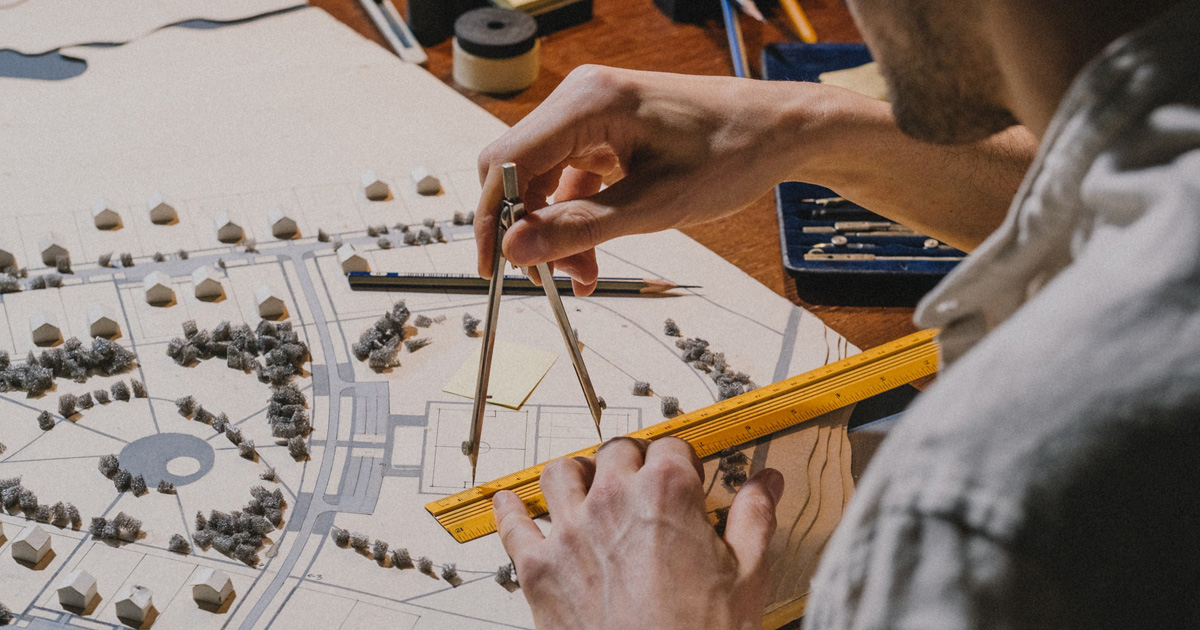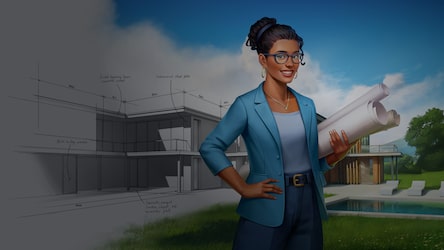Architect Collaboration Tips for Working with Contractors and Builders
Architect Collaboration Tips for Working with Contractors and Builders
Blog Article
Comprehending the Diverse Career Paths Available for Aspiring Architect
As an aspiring Architect, you have a globe of occupation courses waiting on you. Each course provides one-of-a-kind challenges and possibilities to apply your imagination and technical expertise. Whether you're drawn to standard architecture or the nuances of lasting design, there's a particular niche that aligns with your rate of interests. Recognizing these diverse choices can form your professional journey, but which direction will you pick to explore first?
Conventional Design: Creating Structures and Structures
Conventional design concentrates on making structures and structures that blend performance with aesthetic charm. As you discover this area, you'll value the complex equilibrium in between type and objective. You'll find out to attract ideas from historic designs, including components like proportion, products, and workmanship. Your layouts can mirror social heritage, showcasing neighborhood practices while fulfilling modern needs.
You'll establish skills in preparing, model-making, and site evaluation, permitting you to picture and interact your concepts efficiently. Engaging with customers, you'll require to understand their vision and translate it right into practical styles.
Furthermore, constructing codes and sustainability techniques are necessary in your work, guaranteeing your frameworks are ecologically friendly and secure. As you grow in your career, you'll locate chances in residential, business, and even restoration tasks, each offering distinct obstacles. Accepting traditional style leads the way for a satisfying career that pays tribute to the past while shaping the future.
Urban Preparation: Shaping Neighborhoods and Public Spaces
As an aspiring Architect, you can play an important duty as a metropolitan organizer, transforming just how communities function and interact. By using neighborhood involvement techniques, you'll assure that locals have a voice in forming their environment. Plus, integrating lasting layout concepts will help produce areas that not just satisfy today's requirements yet additionally secure the future.
Duty of Urban Planners
While several might consider architects as the sole enthusiasts behind structures, metropolitan organizers play a vital duty in shaping the wider landscape of neighborhoods and public areas. They assess land use, zoning legislations, and neighborhood requires to develop lasting environments that enhance lifestyle. By teaming up with numerous stakeholders, you'll help design parks, transportation systems, and houses that advertise social communication and ease of access. Urban coordinators additionally concentrate on ecological considerations, ensuring that developments integrate green spaces and support biodiversity. Your know-how in spatial layout and area characteristics permits you to imagine future development while protecting social heritage. In this critical duty, you'll straight affect exactly how people experience their surroundings, making every project an opportunity for favorable adjustment.
Community Involvement Methods
Efficient neighborhood engagement approaches are crucial for metropolitan organizers to ensure that the voices of locals are listened to and valued in the planning procedure. To promote meaningful discussion, you ought to focus on open online forums and workshops where area members can share their ideas and problems. Use studies and social networks to reach a more comprehensive audience, making certain diverse viewpoints are included. Teaming up with local companies can enhance depend on and facilitate much deeper links. It is very important to provide clear info concerning proposed jobs and decision-making procedures, enabling homeowners to feel educated and encouraged. By actively incorporating and listening comments, you'll develop spaces that show the neighborhood's demands, ultimately bring about even more sustainable and successful metropolitan settings. Embrace transparency and constant discussion for lasting impact.
Lasting Design Principles
When developing urban areas, integrating lasting layout concepts is essential for producing atmospheres that grow both environmentally and socially. You need to start by concentrating on energy efficiency, utilizing products that lower waste and promote recycling. Take into consideration integrating green areas, like parks and yards, to improve biodiversity and improve air top quality. Advertising walkability and public transport can reduce reliance on cars, fostering a healthier community.
Creating with water conservation in mind is likewise essential-- consider rainfall gardens and absorptive surfaces to take care of stormwater. Involving area members throughout the planning process warranties that the areas you develop meet their requirements and encourage social communication. By welcoming these principles, you'll add to dynamic, lasting urban landscapes that benefit every person.

Landscape Style: Developing Lasting Outside Environments
As you discover landscape design, you'll find important design concepts that create functional and beautiful outside spaces. Lasting methods play an important function in guaranteeing these settings prosper while minimizing ecological impact. And also, you'll find a range of career chances that allow you to make a genuine difference in exactly how individuals communicate with nature.
Layout Principles in Landscape
Understanding design principles in landscape style is important for creating sustainable outdoor environments that harmonize with nature. You'll require to consider components like range, proportion, and balance to guarantee your styles really feel cohesive and inviting. In addition, pay focus to seasonal adjustments, creating with materials that complement the environments year-round.
Lasting Practices Introduction
Lasting techniques in landscape architecture not only focus on visual appeals however additionally focus on environmental health and wellness and source preservation. You can develop areas that advertise dirt wellness, such as using organic materials and practicing permaculture concepts. Ultimately, these practices guarantee your styles benefit both people and the atmosphere for years to come.
Occupation Opportunities Expedition
With a strong structure in sustainable techniques, landscape design uses a variety of job courses that allow you to make a purposeful effect on the environment. Urban organizers commonly collaborate with landscape engineers to produce green areas in urban setups, enhancing city livability. If you're enthusiastic about education and learning, consider coming to be a landscape architecture instructor, inspiring future generations.
Lasting Design: Concentrating On Eco-Friendly Practices
As you explore your occupation in architecture, accepting environmentally friendly techniques can establish you apart in a competitive area. Sustainable style concentrates on creating structures that minimize environmental influence while enhancing passenger health. By incorporating sustainable products, energy-efficient systems, and sustainable check out this site building methods, you'll add to a greener future.
Start by getting expertise of green accreditations like LEED or BREEAM, which can strengthen your credentials. Think about exactly how all-natural light, ventilation, and thermal efficiency can enhance style. Collaborate with engineers and environmental experts to introduce remedies that reduce waste and save resources.
Do not neglect the importance of community involvement-- appealing regional stakeholders can influence styles that balance with the setting. As customers increasingly focus on sustainability, your proficiency in eco-friendly practices will certainly not only bring in jobs but also fulfill your passion for responsible architecture. Embrace this important element of the occupation, and view your profession thrive.
Historic Preservation: Protecting and Restoring Social Heritage
While you start on your building journey, think about the important role of historic conservation in keeping our cultural heritage. This field concentrates on the defense and reconstruction of substantial buildings, sites, and frameworks that inform the stories of our past. By participating in historical conservation, you'll help safeguard the building tradition that shapes community identification.
As a historic conservation Architect, you'll analyze historic significance and analyze the condition of frameworks. You'll work very closely with chroniclers and conservationists to guarantee authentic restoration methods are employed. This occupation course enables you to mix imagination with study, enabling you to create solutions that appreciate original materials and workmanship.
Your work not only adds to sustainability by reusing existing structures but likewise cultivates a sense of pride within communities. Embracing this path will certainly help you end up being a guardian of background, maintaining the stories and aesthetic appeals that enhance our lives.
Inside Design: Enhancing Indoor Spaces
Historic preservation and interior style both share a commitment to improving the constructed atmosphere, yet they concentrate on different aspects. While historic preservation highlights keeping a structure's social and historical value, interior design zeroes in on optimizing more interior rooms for performance and looks.
As an ambitious Architect, you'll find that indoor design allows you to mix creativity with technical skills. You'll develop areas that not just look excellent yet additionally promote comfort and efficiency. This area involves comprehending exactly how light, color, and products communicate within a space, affecting state of mind and usability.
You'll deal with different jobs, from property homes to commercial workplaces, guaranteeing that each atmosphere fulfills the demands of its occupants. By focusing on customer experience, you can change insides right into motivating and functional spaces, making a considerable influence on exactly how people interact with their click site environments. Welcome the possibility to boost indoor settings and form the way people function and live.
Industrial Design: Combining Performance With Aesthetic Appeals
Industrial design plays a necessary duty in producing items that effortlessly blend aesthetics with performance, making sure that what you make use of everyday is not just visually appealing yet likewise functional. As a hopeful Architect, you can engage yourself in this area, concentrating on developing whatever from furnishings to consumer electronic devices. Your job entails comprehending customer requirements, products, and manufacturing processes, permitting you to produce innovative options that enhance day-to-day experiences.
In industrial layout, you'll usually team up with marketers, suppliers, and engineers, guaranteeing that your layouts are not only beautiful yet likewise viable. You'll learn to stabilize kind and function, focusing on usability without giving up design. By sharpening your abilities in laying out, 3D modeling, and prototyping, you'll be well-appointed to bring your ideas to life. This profession course uses a vibrant environment where creative thinking meets functionality, making it a fulfilling selection for architects interested in shaping the products of tomorrow.
Regularly Asked Concerns
What Educational Accreditations Do I Required to Come To Be an Architect?
To end up being an engineer, you'll need a specialist degree in design, generally a Bachelor's or Master's. Furthermore, you'll have to finish a teaching fellowship and pass the Architect Registration Assessment to exercise legitimately.
Are There Certification Requirements for Various Building Profession Paths?
Yes, there're accreditation needs for various architectural courses. Architect. You'll require to pass tests, full teaching fellowships, and occasionally pursue specialized training, depending upon your chosen emphasis, like landscape design, metropolitan style, or historical conservation
What Software Abilities Are Essential for Architects Today?

Just How Can I Gain Practical Experience While Researching Design?
You can get sensible experience by interning at architectural firms, taking part in design competitions, offering for community tasks, or collaborating with schoolmates on real-world jobs. These opportunities improve your skills and construct beneficial connections in the sector.
What Work Opportunities Exist Outdoors Standard Style Firms?
You can check out various task chances outside typical style firms, like city planning, indoor layout, landscape design, building and construction monitoring, real estate development, or perhaps roles in sustainability consulting. Each offers special challenges and rewards.
Whether you're drawn to typical style or the subtleties of sustainable style, there's a niche that lines up with your passions.When designing urban areas, including lasting design principles is important for developing environments that flourish both ecologically and socially.As you check out landscape design, you'll uncover essential design principles that produce useful and beautiful outdoor spaces.Comprehending style principles in landscape design is necessary for developing lasting exterior settings that integrate with nature.In commercial layout, you'll usually team up with suppliers, designers, and marketing professionals, ensuring that your layouts are not just stunning however also viable.
Report this page